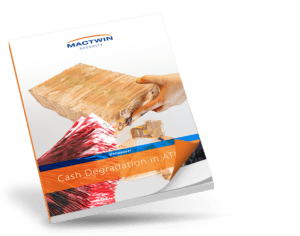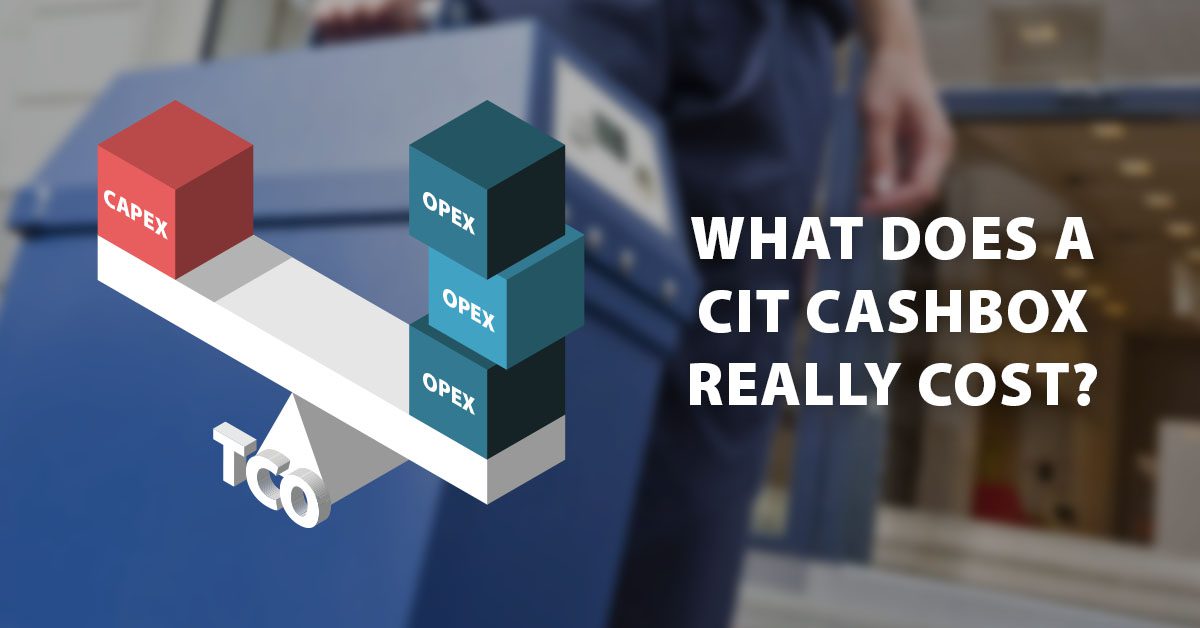Total Cost of Ownership IBNS
In previous articles, we wrote about the differences between the available cash degradation solutions (IBNS, or Intelligent Banknote Neutralisation Systems) for ATMs. In addition to the aforementioned differences, like the applied degradation liquid and the means of operation, the price of these solutions will also differ. How come? And what do you need to take into account when choosing a cash degradation solution?
Well, for starters: when assessing prices, it is important to not only consider the purchase price, but also the management costs and, for example, the expected lifespan. In other words: the Total Cost of Ownership (TCO).
Purchase price (CapEx)
Contrary to what you might expect, the differences in purchase price are not so much related to the use of glue or ink as a degradation agent, but mainly to the method of activation. In general, we can say that passive degradation systems are the cheapest, followed by active stand-alone systems. The most expensive are the active systems with controller. The price therefore increases with the increase of activation options. The more sensors are used, the more expensive (but also more reliable) the solution. The possibilities to link the system to external (third party) sensors or early warning systems also influence the price.
Read all about how to activate cash degradation solutions in this article.
The explosive attacks on ATMs in Europe initially mainly took place with gas, but this is gradually shifting to attacks with solid explosives. For example with flash powder, plastic explosives or homemade explosives. If you want to protect your ATMs against this type of attack, an IBNS with controller, linked to early warning systems, is your best bet.
Management, maintenance and lifespan (OpEx)
In general, IBNS solutions require little maintenance. Nevertheless, it is important to have insight into the expected costs for management and maintenance if you want to make a choice. Batteries and degradation fluids – whether glue or ink – must be replaced periodically (every few years). No major differences between the solutions are known in this area. However, when it comes to the total cost, you should also consider the life of the product and the number of (expected) unwanted activations.
And on these two points there are indeed big differences between the various solutions. Unfortunately, the number of unwanted activations due to technical failures appears to be considerable for some products. Other solutions, such as GlueFusion, are known to have virtually no unwanted activations. Unwanted activations can also be the result of user errors. This is why, when purchasing a cash degradation solution, it is important to check which safety features are included in the product in order to prevent misuse and therefore unwanted activation. If you are involved in a purchase process, it is good to ask for insight into these safety provisions. You can also ask for the user manual, which usually contains more information about the measures taken.
The longevity of the IBNS solutions is another aspect of the TCO. How robust are the materials used and can the product take a beating? After all, when replenishing or swapping cash cassettes, cassettes may fall or hit something. The more robust the product is built, the more resistant it is to these types of daily wear and tear and the longer the life of the product.
In conclusion
Price always plays a role when choosing a suitable solution. It is important to not only compare the initial purchase price, but also to include the OpEx costs for the longer term. You can only make a good choice if you understand the total costs and the lifespan of the solutions. In addition, do not forget to consider other aspects, such as:
- Unambiguous and irreversible cash degradation
- Safety for man and machine
- Methods of activation
More information?
Would you like to know more about IBNS or would you like to have a price indication, please contact us.





